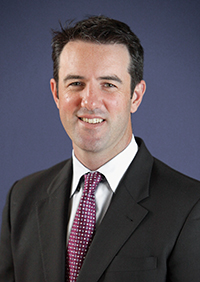It’s 3:45 p.m. The day is almost done; just a few more trades to do. Do you know where your order is?
Increasingly, traders are waiting until the final 15 minutes of the day to trade. Liquidity is more plentiful. Spreads are tighter. Volatility is lower compared with the open. Thus, trading is cheaper and liquidity at its highest.
This shift in activity was most dramatic in 2008, as financial-crisis conditions heightened risk management and spurred traders to “finish the ticket” by the end of the day to avoid wearing excess risk overnight, according to Credit Suisse’s Trading Strategy group. By 2010, the broker said, the pattern shift had largely stabilized as the crisis faded, with about 18 percent of all volume transacted in the last 30 minutes of the day. It has stayed stable since.

Still, in the current low-volume environment where sourcing liquidity remains a problem for the buyside, brokers are again pointing out the virtues of trading at or around the close.
“Many people will tell you the end of the day is the only time to trade,” Rod Burns, head of West Coast portfolio products at Bank of America Merrill Lynch, told Traders Magazine.
Nowadays, in the current six-and-a-half-hour trading day, 33 percent of all daily volume is being done during the 30 minutes following the market open and 30 minutes before the close, according to Bank of America data. Four years ago, only 30 percent of all daily volume was done during the same two time periods.
Behind the shift-which pros say is permanent, and not a short-term trend-are several factors. First, now that the fear has worn off from the crisis and macro events are not driving things, the market is less volatile and correlations between stocks have broken down.
This is good news for portfolio managers who pick stocks, but bad news for traders. It has gotten increasingly expensive to trade, especially large blocks.
Second, the use of algorithms has produced trading strategies that rely on more precise timing. They are only effective when there is enough volume to make them effective. That tends to force all trades to the close, when liquidity and participation are the highest.
Third is the prevalence of high-frequency traders who must close out their positions at the end of the day. They don’t like to carry positions overnight because of the risk. TABB Group said HFT volume accounts for at least half of total market volume. The HFT trade carries weight.
Finally, you have the inverted, or taker-maker, stock exchanges-Nasdaq OMX BX, BATS Global Markets BZX exchange and some others. These exchanges pay traders to take liquidity and charge suppliers of liquidity. Because many traders, such as HFTs, program and index traders, are in a hurry at the end of the day to get out of positions, they have no qualms about paying an exchange to close out their positions.
Nasdaq BX, for example, does 20 percent of its volume in the final 15 minutes of the day, according to a study done earlier this year by Credit Suisse.
All in all, the combined market share of the inverted exchanges at the close is greater than the New York Stock Exchange closing volume, according to Credit Suisse data.
All of this is forcing traders to focus on this critical part of the day. And that’s not easy, because there are many skilled operators looking to gain an advantage.
“The new paradigm requires traders to have the right tools, the right relationships and the right expertise to attract liquidity,” Burns said.

A particularly tricky aspect of negotiating the final 15 minutes is maintaining queue position in the exchanges. It’s the job of brokers (and their algorithms) to maintain queue positions in venues that are really crowded relative to the rest of the day.
“How do I optimize my queue position? If there are so many orders there, bunching up in all these inverted venues and traditional venues, I can get backed up in the queue and never get done,” Burns explained.
For example, as the market close approaches, more and more participants place limit orders on the primary exchanges in an attempt to be on the book at the time of the closing auction. This results in very long queues on the primary exchanges; if an order “A” is placed on the book after many others, all the other orders ahead of “A” must execute before it can execute. Therefore, choosing the correct venue for posting at the end of the day is critical to avoid missing execution opportunities.
Burns said the inverted venues have added to this dynamic with a stacked book of participants trying to take liquidity and avoid fees at the end of the day.
Timing is everything, and there are at least three major times during the final 15 minutes that demand a trader’s attention and add to the complexity of trading at the close.
First, the exchanges broadcast their order imbalance information at 3:45 p.m. This alerts the market to the size of buy volume relative to sell volume in every single stock.
Second, with five minutes to go, the NYSE makes floor broker D-quotes available. D-quotes allow for modifications or cancellations after the exchange cutoff time for market-on-close orders at 3:45 p.m. Eastern.
By incorporating the D-quote order type into the algo, clients can have more flexibility in choosing the appropriate size of an order to place on the close after analyzing the NYSE imbalance data and placing a market-on-close order.
Finally, you have the close itself. This is the time when all the market-on-close (MOC) orders get filled. The NYSE is king here, as these trades occur on the lit exchanges. NYSE does the largest percentage of its volume on the final print of every stock-upward of 20 percent. It also does more than any other exchange, according to data from Credit Suisse.
Among the biggest users of MOC prints are indexers, especially on rebalance days, according to Phil Mackintosh, managing director, trading strategy, at Credit Suisse. However, indexers aren’t the only ones who use MOC, he said. Many institutions need to trade at the close price, for a variety of reasons-but usually to minimize risk versus their benchmark.
Some institutions need to trade at the closing price so their NAVs are calculated properly. The brokers’ program trading desks play a big role here, especially on index rebalancing days.
See Chart: Time Profile Stock Trading
“When the Russell indexes rebalanced in June, typically $20 to $30 billion in trades happens at the close over the last 10 years,” Mackintosh said. “That’s a significant liquidity event and multiples of a typical day’s close.”
Enter Algorithms
The brokers’ program trading desks often play a big role on close, especially on index rebalancing days. They have the electronic trading tools to best handle the vast multitude of stocks in a basket, Mackintosh said.
Although other desks can send orders into the close auction, it is typically on a stock-by-stock basis. They are less prepared to handle multiple orders in a uniform fashion quickly, he added.
A big question for traders is how close to the closing price they need to be, Merrill’s Burns said. This holds especially true for index traders, who need to be at the closing price or better. With tighter spreads and lower volatility in the last 30 minutes, some argue that at this time there isn’t been a better opportunity to beat the closing price.
“There are tools out in the market suggesting you can beat the price on a best-efforts basis. For index traders, the cost of losing the closing price far outweighs the potential loss of missing it,” Burns explained. “Managing your volume levels and taking advantage of stacked queues with proper routing is the real opportunity in the final minutes of the session.”
And what about the technology being used? In the past year or so, brokers have been furiously tweaking their algorithms to deal more efficiently at the close. Deutsche Bank offers its clients TargetClose. Agency broker ITG has Dynamic Close, which looks to reduce the price impact from overparticipation during the NYSE and Nasdaq closing auctions. Weeden & Co. has recently released CloseIQ, its own tool designed to make trading at the close easier. Citi has Close.
“You need fast algos. Liquidity-seeking algos. Algos that will take out as much liquidity at a single price point and pull back. And then refresh and do it again,” Burns explained.
Tim Reilly, head of electronic execution sales, Americas, at Citi, said the extreme increase in liquidity and high-quality depth of book during the last 30 or so minutes of the trading day created an opportunity for the firm to update their algorithms.
See Chart: Percent of Day’s Volume
Reilly told Traders Magazine during a recent interview that the firm has re-engineered the firm’s Close algorithm to trade large orders more intelligently into the close, versus a historical emphasis on simply matching the final print. “Individual stock profiles are combined with real-time imbalance data to dynamically manage execution throughout the final segment of the day,” he said.
Merrill has been tweaking an existing strategy called “Quantitative Market on Closing Strategy” that determines, on a stock-specific basis, the amount of volume that can execute in the closing auction without impacting the closing price. If the order size is larger than the amount that can execute on the auction, the strategy begins trading in the continuous market before the auction. Trading aggressiveness is configurable based on the degree of impact the user is willing to risk.
So while the brokers have been encouraging and providing tools to trade at the end of the day, what about investors?
Frank Pallus, owner of Pallus Investment Partners in Miami, said that, given the increase in trading volume and liquidity during the last 30 minutes, it’s hard not to trade.
“When I am looking at the last 30 minutes every day, we have an increased volume, and this speaks for institutional positioning and when my signals tell me to trade,” Pallus said. “I am going along with the action.”
Kevin Chapman, head of trading at Allianz Global Investors, said trading at the close makes sense to him. First, portfolio managers can maintain a degree of anonymity amid the volume spurt. Second, when there is news in a particular name, trading at that particular moment could lead to adverse price selection.
“Bigger investors won’t trade in the first half hour or so-they’ll wait it out,” Chapman said. “We have three main investment teams here, and no one stays away from close. If I’m working an order and need to complete it, I’ll try to take advantage of the volume at the close.”
-addl. reporting by Peter Chapman
(c) 2013 Traders Magazine and SourceMedia, Inc. All Rights Reserved.
http://www.tradersmagazine.com http://www.sourcemedia.com/



